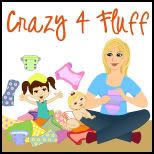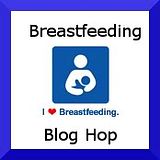I found this article a few weeks ago and LOVE IT!
It really makes you wonder "How GREEN am I willing to go?"
No one will argue that human consumption
is having disastrous consequences on our environment.
We need to take steps to reduce the amount of waste
we produce and live a more eco-friendly lifestyle.
Even small steps toward this goal require changes in habits and attitudes.
Recycling aluminum cans and paper is socially acceptable.
Similarly, many shoppers have begun to skip the
paper vs. plastic discussion by opting to bring a reusable tote from home.
What happens, though,
when an item like the family cloth is introduced into the living green discussion?
Although family cloth discussions have are a hot topic on green and eco-friendly chats lately,
most people are not familiar with the family cloth or its use.
Even among very green households the family cloth creates controversy.
The purpose of the family cloth is to reduce the waste created by toilet paper.
The environmentally unfriendly aspects
of toilet paper happen before it arrives at your home.
Trees are destroyed for the necessary pulp and large
amounts of chemicals are used to turn the wood pulp into the soft, fluffy,
white tissues we like to use.
In addition, those darn packages of t.p. are big
and a lot of fuel is burned getting them to their destination.
These concerns are causing people to ditch their toilet paper and use a family cloth instead.
Eco-friendly families usually start out trying different cloths.
Old t-shirts are the most popular source for family cloth pieces.
Using them for a family cloth prevents them from becoming yet another piece of landfill.
Cotton t-shirt material is soft and very absorbent.
They also receive high ratings from female users because
they don't leave any of that annoying tissue dust after usage.
For those unfamiliar with the family cloth,
the name is somewhat misleading.
No one seems to be certain where the term originated but is not an accurate title.
Family members do not share a single cloth for their
bathroom wiping needs. Each family has their own method, but most often a stack of clean cloth strips are left near the toilet in the bathroom.
After use the family cloth is placed in a bucket.
Every few days the contents are washed.
Sanitary issues are a top concern for those who don't use the family cloth.
They worry about the used cloths sitting around
and about whether they get really clean. This should not be a concern.
Cloth diapers are similarly stored and washed without problem.
When children wet the bedding or their clothing the items are washed and reused,
not discarded. The family cloth is no different.
While some green households use the family cloth
to entirely replace their toilet tissue needs, most do not.
Based on discussion board comments,
the family cloth is most often used only after urination.
Very few families use it after #2.
The biggest opposition to the family cloth seems to come
from men who use it less often anyway.
Even households that rely entirely upon the family cloth
admit to stocking regular toilet paper for their guests.
The family cloth is completely environmentally friendly.
The family cloth is completely environmentally friendly.
It is also a great way to save money.
Some families rely on the family cloth to help cut their paper product expenses.
Others opt to use the family cloth in an effort to reduce stress on their septic tank system.
In the general population the idea of the family cloth
In the general population the idea of the family cloth
is met with a look of astonishment and horror.
Within the environmentally concerned green
community the family cloth is an obvious choice.
How green are you willing to go?






















1 comments:
I have been hearing/reading about family cloth lately. I can easily see using if for wiping #1 or Aunt Flo, but I could not handle #2... even though I CD. Thanks for sharing this story.
Post a Comment